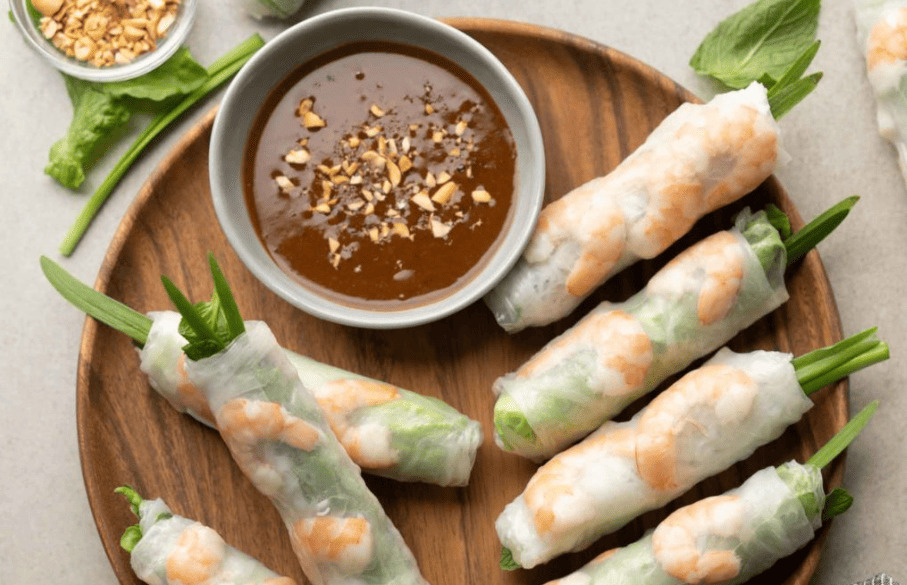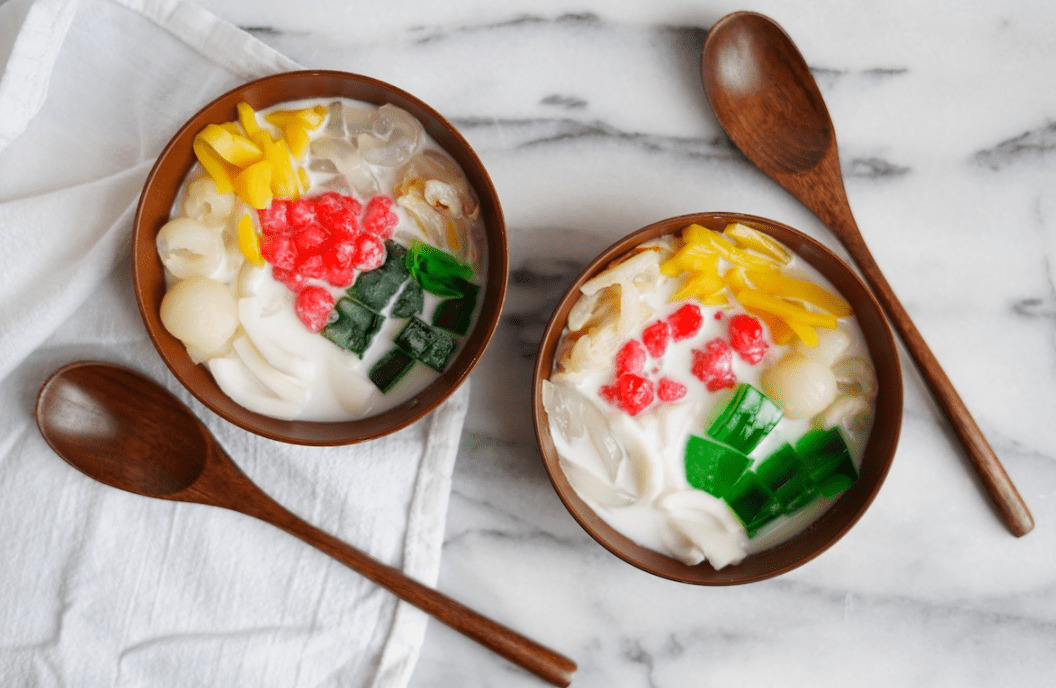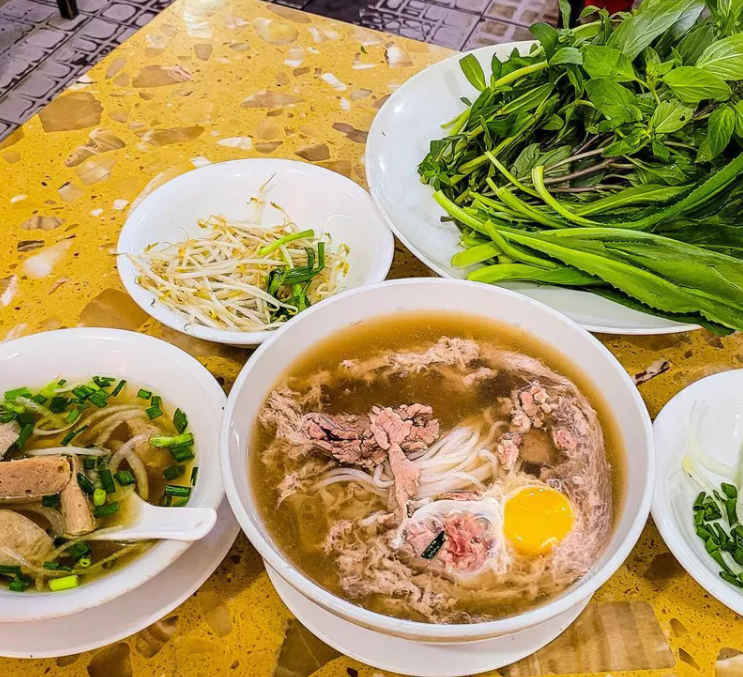The Perfect Diet for Muscle Training! Enjoy High-Protein, Low-Calorie Vietnamese Cuisine

For those who engage in muscle training, diet management is essential. To build muscle efficiently while avoiding unnecessary fat gain, a high-protein and low-calorie diet is crucial. One of the best options is Vietnamese cuisine. Known for its fresh ingredients and low-oil cooking methods, it is perfect for maintaining a healthy and nutritious diet while training.
In this article, we will explore why Vietnamese cuisine is ideal for muscle training, recommend high-protein, low-calorie dishes, and provide nutritional data through visual graphs and tables.
目次
1. Why Vietnamese Cuisine is High-Protein and Low-Calorie
Vietnamese cuisine is beneficial for muscle training due to the following reasons:
- Rich in fresh vegetables and herbs
- Focus on steaming and soup-based dishes with minimal frying
- Abundant in high-quality protein sources like chicken, shrimp, and tofu
- Uses rice paper and rice noodles, making it easy to digest
Nutritional Comparison of Popular Vietnamese Dishes
| Dish | Calories (kcal) | Protein (g) | Fat (g) | Carbs (g) |
|---|---|---|---|---|
| Gỏi cuốn (Fresh Spring Rolls) | 80 | 7 | 1 | 10 |
| Phở Gà (Chicken Pho) | 380 | 30 | 5 | 50 |
| Bánh Canh (Thick Rice Noodle Soup) | 420 | 28 | 7 | 55 |
| Bánh Xèo (Vietnamese Savory Pancake) | 450 | 20 | 10 | 60 |
Values are approximate.
2. Recommended High-Protein, Low-Calorie Vietnamese Dishes
2.1 Gỏi Cuốn (Fresh Spring Rolls)

Calories: Approx. 80 kcal per roll
- Ingredients: Shrimp, pork, vegetables, rice paper
- Benefits: Low in fat, high in protein, and rich in vitamins & minerals
- Why It’s Recommended: Light yet nutritious, making it an ideal snack or meal
📊 Nutritional Breakdown (per roll):
- Protein: 7g
- Fat: 1g
- Carbohydrates: 10g
2.2 Phở Gà (Chicken Pho)

Calories: Approx. 380 kcal per bowl
- Ingredients: Chicken, rice noodles, broth, vegetables
- Benefits: Easy to digest, low in fat, and rich in protein
- Why It’s Recommended: The flavorful broth provides essential nutrients while keeping calorie intake in check
📊 Nutritional Breakdown (per bowl):
- Protein: 30g
- Fat: 5g
- Carbohydrates: 50g
2.3 Bánh Canh (Thick Rice Noodle Soup)

Calories: Approx. 420 kcal per bowl
- Ingredients: Shrimp, pork, rice noodles, broth
- Benefits: Balanced mix of protein and carbohydrates
- Why It’s Recommended: Ideal for post-workout energy replenishment
📊 Nutritional Breakdown (per bowl):
- Protein: 28g
- Fat: 7g
- Carbohydrates: 55g
3. Meal Plan Incorporating Vietnamese Cuisine
| Meal | Menu | Nutritional Benefits |
| Breakfast | Phở Gà | Easy to digest, balanced protein and carbohydrates |
| Lunch | Gỏi Cuốn + Vegetable Salad | Low-calorie, high-protein, rich in vitamins |
| Dinner | Bánh Canh | High protein, replenishes energy after workouts |
4. Tips for Maximizing Vietnamese Cuisine in Muscle Training
Focus on Protein Intake
- Choose dishes with chicken, shrimp, pork, or tofu
- Ensure a balanced intake of carbohydrates and proteins
Avoid High-Fat Dishes
- Opt for steamed, boiled, or soup-based dishes instead of fried food
- Limit the use of heavy sauces to keep calorie intake low
Incorporate Vegetables and Herbs
- Add more vegetables to dishes like Pho and fresh spring rolls
- Use herbs to aid digestion and improve gut health
5. Conclusion
Vietnamese cuisine is an excellent choice for those looking to maintain a high-protein, low-calorie diet while training. With a variety of dishes rich in lean protein, fresh vegetables, and healthy cooking methods, it is easy to maintain a nutritious and balanced diet.
📌 Key Takeaways:
- Plenty of high-protein, low-calorie options
- Prioritize steamed and soup-based dishes over fried food
- Use fresh vegetables and herbs for additional nutrients
By incorporating Vietnamese cuisine into your diet, you can effectively support muscle growth, maintain your energy levels, and enhance overall well-being!
(Photo by Unsplash.com)



